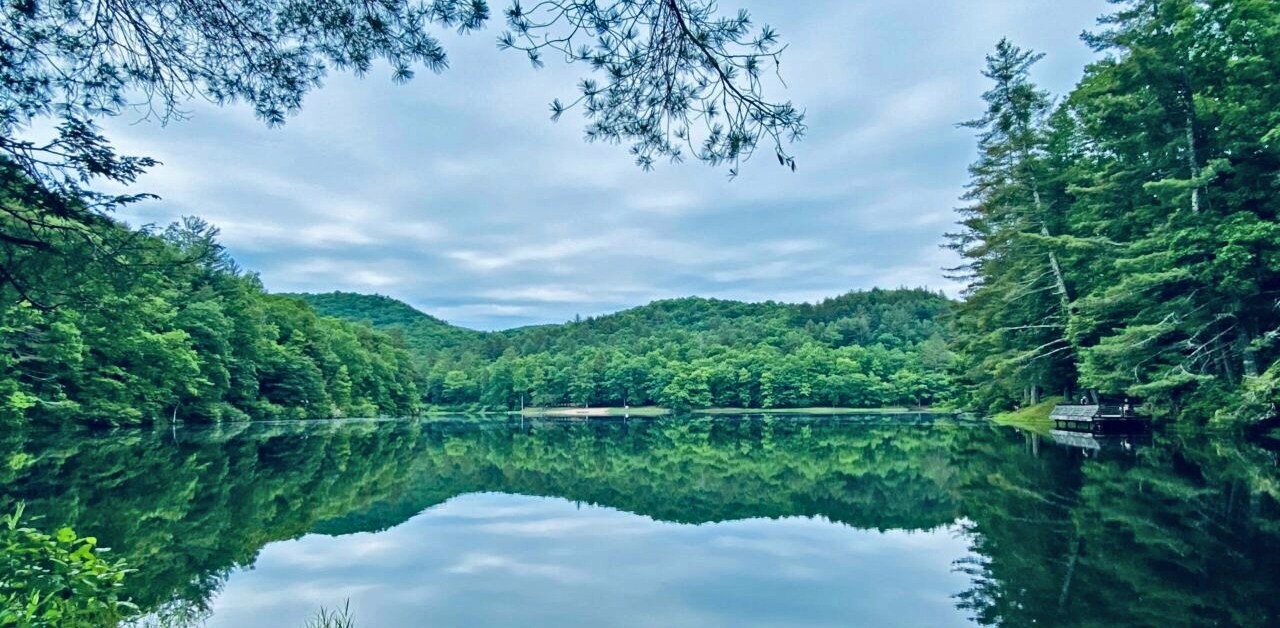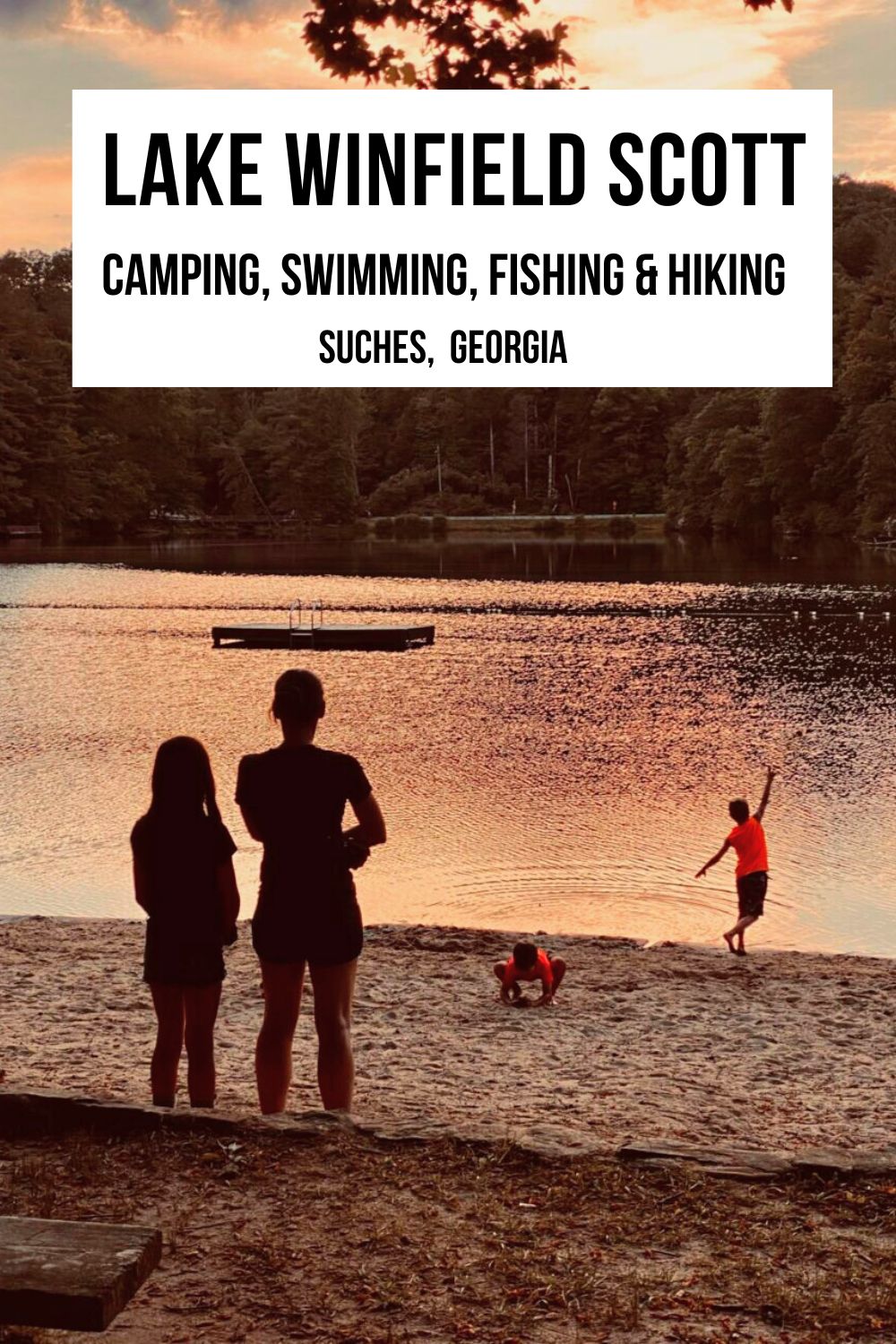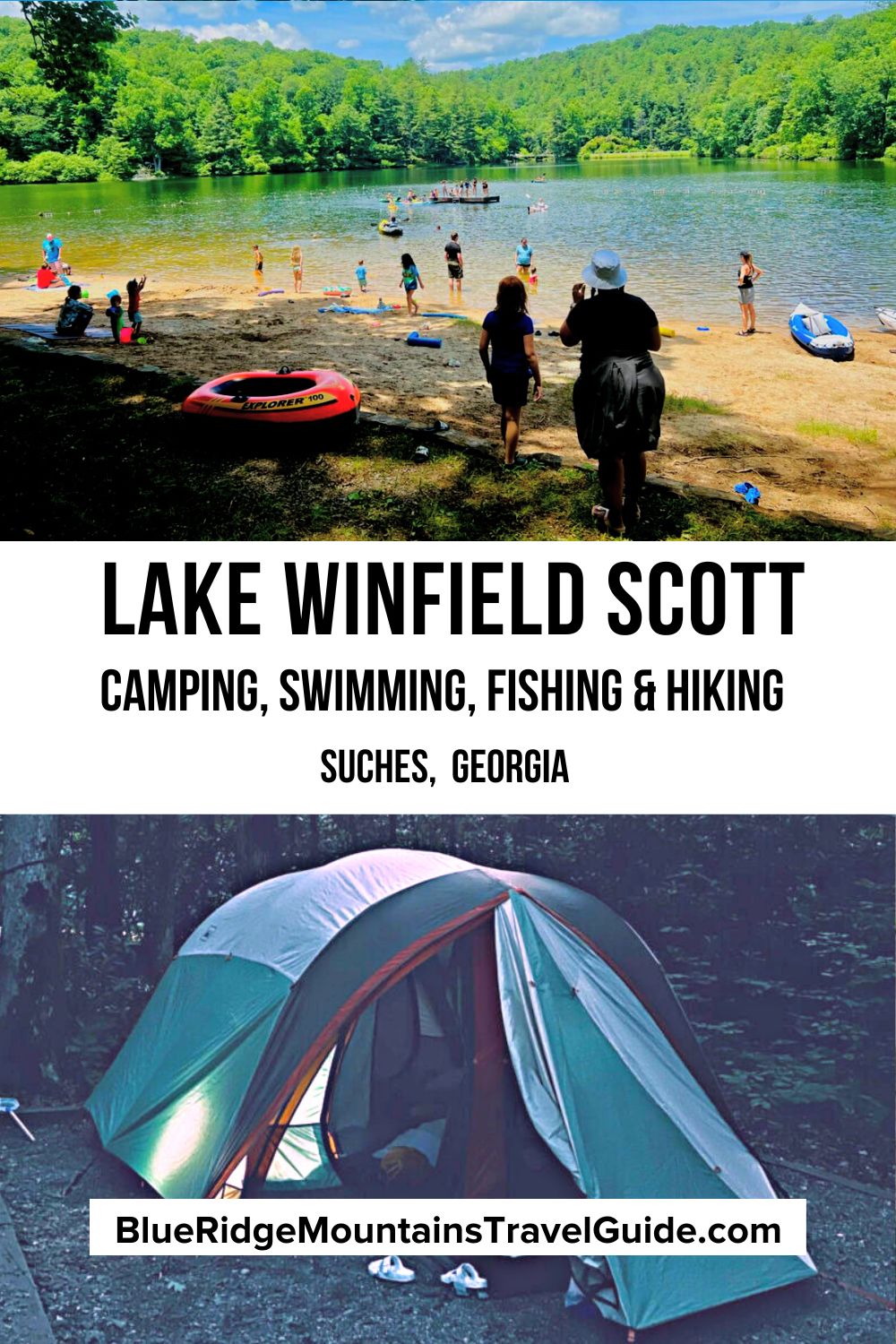I grew up camping with my parents and their friends. Weekends would smell like tent tarpaulins, campfires, and bacon (which always seemed to sizzle for breakfast).
Sometimes there would be a lake with a speed boat and tubing, other times there would be a canoe and fishing poles. But there would always be friends, and stars, and fireflies.
Now I want to create those same types of memories for my own children.
One of our favorite weekend getaways has become Lake Winfield Scott, which is located near the small town of Suches GA.
The lake is what I consider a hidden gem– not the easiest place to get to, and a little off the beaten path. It’s small, and not normally very crowded even on weekends.
The Lake Winfield Scott amenities are limited, but that could be considered a benefit for people who are hoping to disconnect and unwind. There’s no cellular coverage, and the closest signal is about 5 miles away.
If it’s critical for you to stay connected (or reachable in an emergency), this is probably not a great destination for you. But if unplugging for some offline time is part of the goal, Lake Winfield Scott is a perfect destination!
If you enjoy camping, hiking, boating or fishing, the Lake Winfield Scott recreation area offers something for anyone. And when you can’t decide between water or amazing scenic views, the place is a great compromise.
Reading for for our guide to visiting Lake Winfield Scott Recreation Area, including info on the best campgrounds, day use areas, hiking trails, and more.
READ MORE: The 20 Best Lakes in the North Georgia Mountains

Lake Winfield Scott Info
ADDRESS: 439 Lake Winfield Scott Road, Suches GA
COST OF ENTRY: $5 per carload for day-use; $24-48 per campsite, depending on site amenities
CAMPGROUND RESERVATIONS: Recreation.gov
GPS: Apple Maps, Google Maps, and Waze all find this location accurately, either by name or address.
DRIVING DIRECTIONS FROM ATLANTA: Take GA-400 / US-19 North to Dahlonega, then follow US-19 to the traffic circle and exit the roundabout for GA-60. Go 7 miles on GA-60, then turn right onto GA-180. Go 4.5 miles to Lake Winfield Scott Road, which will be on the right.
READ MORE: The 20 Best Things to Do in Dahlonega GA & Lumpkin County
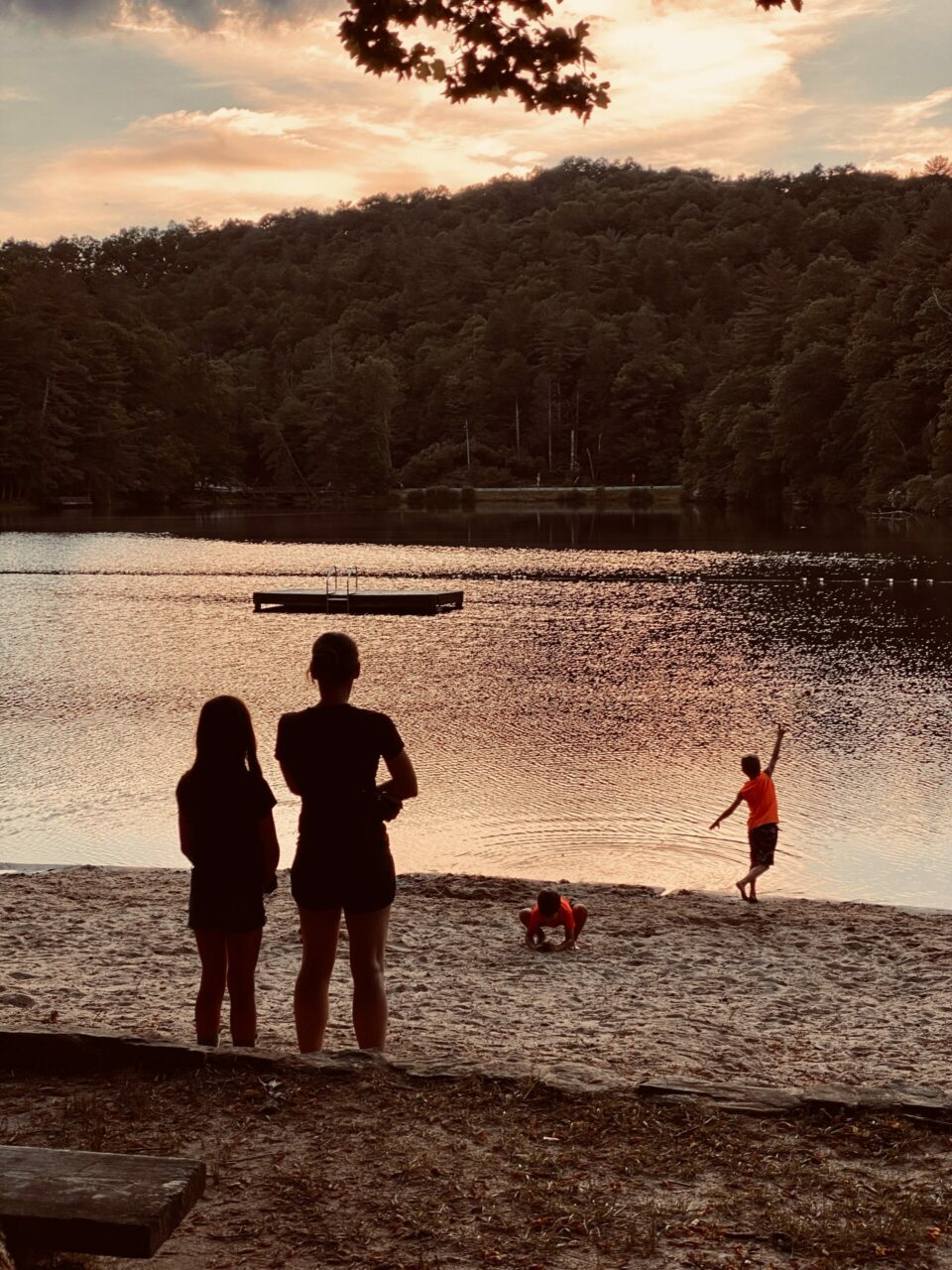
The History of Lake Winfield Scott
Lake Winfield Scott was completed in 1942 by the Civilian Conservation Corp, as part of their efforts to expand recreational areas in the North Georgia mountains.
The CCC was part of President Franklin D. Roosevelt’s New Deal, and operated between 1933 and 1942 as a public work relief program for young, unmarried men during the Great Depression.
The CCC is remembered by many as a worthwhile program which contributed to the military readiness among those in the “Greatest Generation” (who served in it).
Winfield Scott Lake was the final CCC project in Georgia, and one of the last to be completed in the nation prior to World War II.
Several historic posters and markers around the property include photographs and details about the men who built the 18-acre lake, dam, and recreation areas.
This is one of the highest elevated lakes in the state of Georgia. It’s located in a valley in the Chattahoochee National forest, standing at 2,854 feet elevation in the shadow of Blood Mountain.
Because of its high elevation, the lake can be quite comfortable for camping and outdoor recreation, even during the heat of the Georgia summer.
READ MORE:The 20 Best Places to Live in the Georgia Mountains
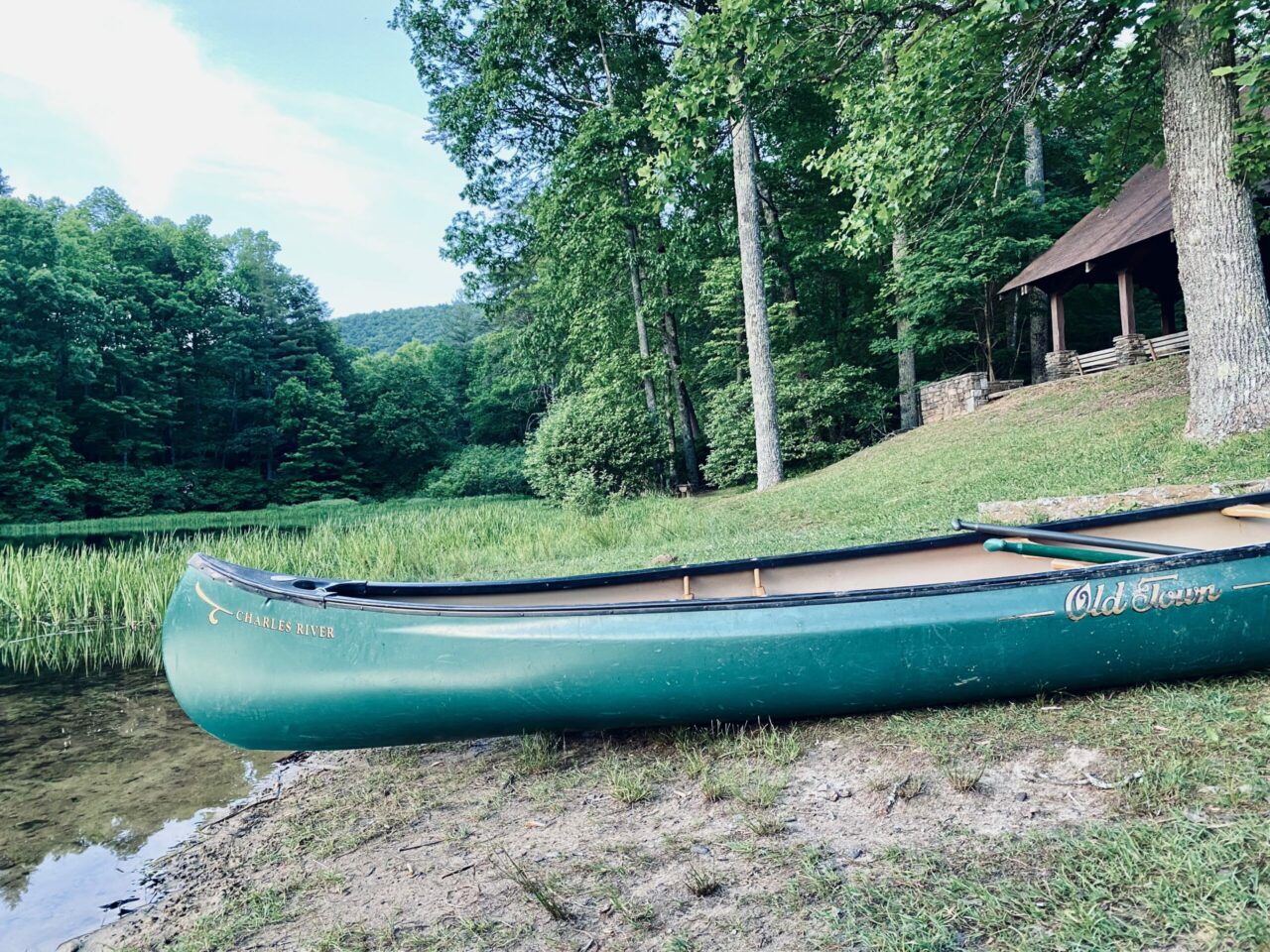
Who was Winfield Scott?
The lake is named for General Winfield Scott, an extremely complicated figure in our nation’s history.
One of the most prominent Generals to ever serve in the US military, Scott was born in Virginia in 1786. He attended the College of William and Mary, and worked as an attorney prior to receiving an Army commission in 1808.
He was also a 4-time presidential candidate with the Whig party, earning the party’s nomination in 1852.
Scott served in the War of 1812, and was a consummate military tactician known for a strict adherence to military discipline and appearance.
He authored a book, “Infantry Tactics, or Rules for the Exercise and Maneuvre of the United States Army,” which served as the US Army’s standard drill manual for 20 years.
Following the discovery of gold in Dahlonega GA in 1829, President Andrew Jackson’s administration passed the Indian Removal Act. General Scott commanded operations in several military conflicts with Native Americans.
In 1838, Scott was given orders to lead the removal of Cherokee natives from the Southeastern U.S., including the area around present-day Lake Winfield Scott.
Although many of his colleagues discouraged him from the mission, Scott— ever the military man— accepted his orders. This forcible relocation became what is now known as the Trail of Tears.
After relocating the Cherokee Indians, Winfield Scott was promoted to Major General in 1841, and served as the Commanding General of the United States Army during the Mexican-American War.
READ MORE: How Gold Mining in Georgia Led to Land Lotteries & the Trail of Tears

General Winfield Scott & The Civil War
Twenty years later, as Civil War battles began breaking out, General Scott remained in his command as the most senior ranking member of the US Army.
Scott knew he was too old to lead troops in battle at the age of 74.
So he suggested to President Lincoln that command of the US Army should be offered to another Virginia native, his friend and protégé Robert E. Lee.
Just 3 days after declining Lincoln’s offer, Lee resigned his commission and assumed command of the Virginia State forces, and eventually the entire Confederate Army.
The challenge of Winfield Scott’s legacy is that, despite his leadership during the Native American removal, he remained aligned with the Union throughout the Civil War.
He is credited with drafting the “Anaconda Plan” (also known as “Scott’s Great Snake”), a savvy blockade strategy that ultimately contributed to the North’s victory.
Known as “Old Fuss and Feathers” or “The Grand Old Man of the Army,” General Winfield Scott served in the Army for over 53 years, and as a general for 47. Even now, he remains the longest-serving general in American history.
READ MORE: The 15 Best Things to Do in Blairsville GA & Union County
Lake Winfield Scott Recreation Area

Day Use Areas at Lake Winfield Scott
Taking a day trip from Atlanta to Lake Winfield Scott is a great way to recharge and relax without having to pack up all your camping gear.
Utilizing the recreation area for the day will cost $5 per vehicle.
If there’s no one manning the guard shack as you enter, make sure to leave the entrance fee in cash in one of the envelopes provided at the drop box.
These fees go to the US Forest Service, to fund the maintenance of the area for all to enjoy.
There are about a dozen picnic tables with grills, great views, and access to the lake. The sandy beach features a roped-off swimming area with a dock in the center.
My kids love swimming out to the dock and jumping off. So much so that they’ve been known to spend an entire day on the dock, playing “King of the Mountain.”
READ MORE: The 10 Best Restaurants in Blairsville GA for Foodies

The stone and beam exterior of the well-maintained bathhouse is evocative of the 1940s-era CCC construction, but the updated restrooms inside include flush toilets and warm showers.
There are two picnic pavilions, both of which require a reservation fee to use. On Sunday mornings, a church holds outdoor services at the larger of the two pavilions, right next to the beautiful lake.
Boats with electric motors and paddle craft are welcome on the lake, and a carry-down boat launch allows for easy water access.
The lake is a serene spot for fishing, kayaking, stand-up paddle boarding. No rentals are available here, so boaters must bring their own equipment.
At only 18 acres, the entire surface of the water can be seen from the shore. So I’m very comfortable turning my kids loose on the lake to further develop their paddling skills.
READ MORE: The 10 Best Kayaking Rivers in Georgia

Lake Winfield Scott Campgrounds
Lake Winfield Scott camping includes 31 campsites around two loops. The North loop has vault toilets, but no running water.
These campgrounds are primitive in terms of amenities, but the sites do include picnic tables and fire rings. No reservations can be made for the North Loop campsites, which are first come, first served.
The North Loop is open year-round, with the fees reduced for the off-peak season because water is not available.
The South loop is open from mid-April through October by reservation only. There are electrical and water hookups to accommodate RVs, although all the sites are appropriate for tent camping as well.
There are two comfort facilities with flush toilets, hot water, and showers located on this loop, which also offers several access points for water.
Neither of the camping loops are located along the shore of the lake, but both are within reasonable walking distance from the water. My kids also like to take their bikes for an easy ride down to the lake.
Several of the campsites on both loops back up to creeks that connect with the lake. Sleeping next to the sound of flowing water is always a tranquil addition to a camping trip.
During the summer season, the campground is staffed by a camp host who stays on-site. They also have firewood available for purchase.
There are no RV dump stations at Lake Winfield Scott, but nearby Vogel State Park will allow it for a nominal fee.
READ MORE: The 15 Best Campgrounds in North Georgia

Lake Winfield Scott Cabin
For those who want to enjoy an overnight stay at the lake, but who prefer a less rustic experience, there is also one Lake Winfield Scott cabin for rent that sleeps up to 12 people.
The cabin offers the closest overnight accommodations to the water.
The upper level is an open sleeping floor, with six twin beds and three double beds.
Note that visitors must bring their own bed and bath linens, but the full kitchen on the first floor is equipped with cooking and serving ware.
The cabin rental does not include a television, which only adds to the “getting away from it all” experience.
READ MORE: The 40 Best North Georgia Cabins to Rent
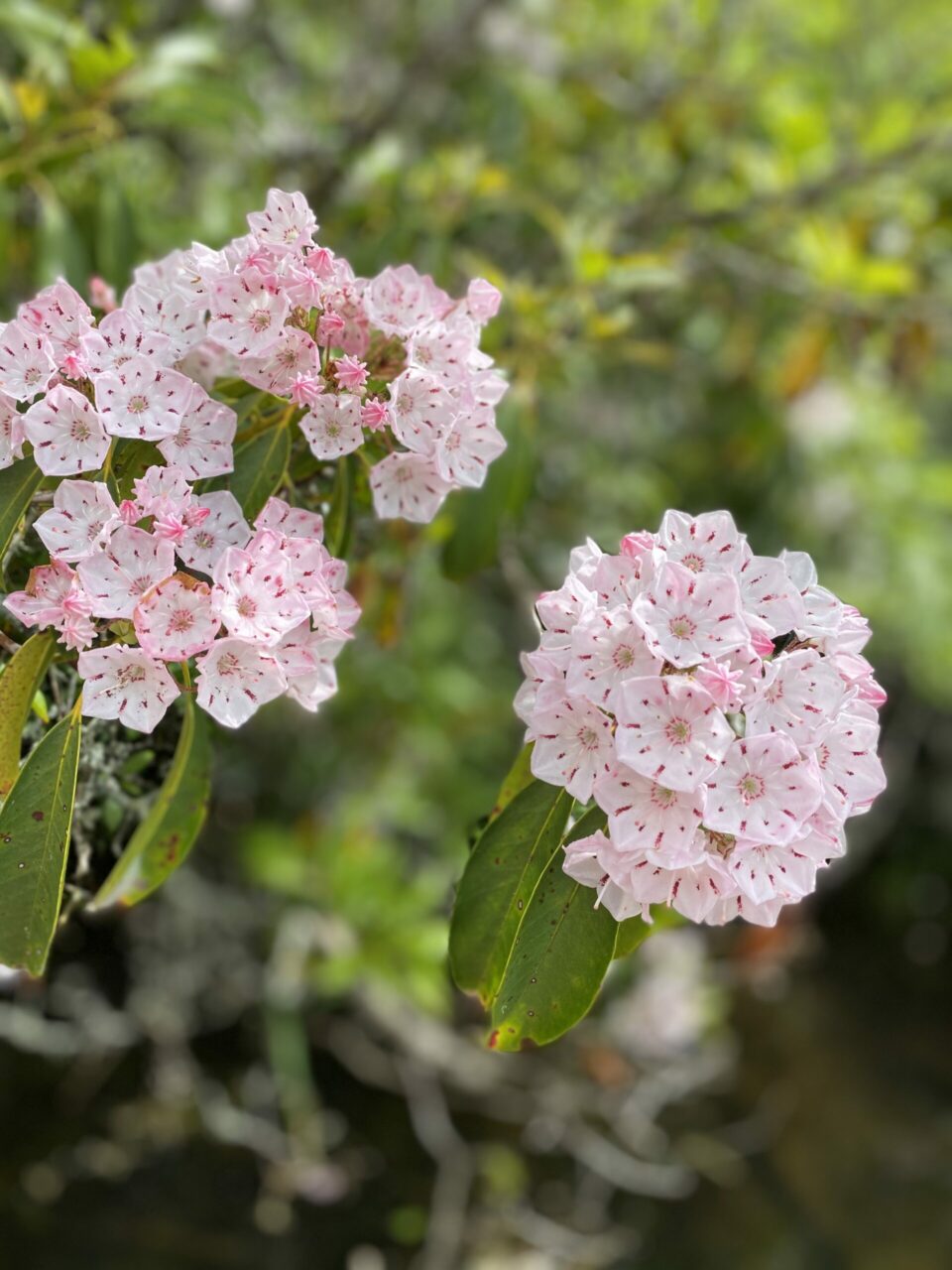
Hiking Near Lake Winfield Scott
There are 3 hiking trails that begin at Lake Winfield Scott. The trail hugging the circumference of the lake is approximately 1 mile in length.
This fairly flat path winds through various North GA wildflowers in the spring, including fire azaleas and mountain laurel. But note that it may flood if there has been significant recent rain.
A short segment of the trail near the dam utilizes GA-Hwy 180/Wolf Pen Gap Road. This road is popular with motorcyclists because of its many twists and turns through the North Georgia mountains.
It does not have a very wide shoulder, so care should be taken when walking along the road near the dam.
Two other trails connect Lake Winfield Scott with the Appalachian Trail in Georgia: The 1-mile Jarrard Gap Trail and the 2.7-mile Slaughter Creek Trail.
Both trails are blue blazes, and start at the Lake Winfield Scott Recreation Area. A loop hike can be done by utilizing the Jarrard Gap Trail, the Appalachian Trail, and the Slaughter Creek Trail.
Blood Mountain stands sentinel over the lake. It was named for the battle fought between the Cherokee and Creek Indians, who were forcibly removed from the area by General Scott during the Trail of Tears.
A hike from Winfield Scott Lake to the summit of Blood Mountain using the Slaughter Creek Trail and Appalachian Trail to form a lollipop-shaped loop would be approximately 8.5 miles round-trip.
Although this route is considered challenging, with about 1800 feet of elevation gain, summer hikers will love cooling off upon their return with a swim in the lake afterwards!
READ MORE: The 20 Best Hiking Trails In Atlanta GA (& Hikes Near Atlanta)

Fishing at Lake Winfield Scott
According to the Georgia Department of Natural Resources, Lake Winfield Scott is stocked for trout twice each month, from April through July 4.
The Winfield Scott Lake dam forms the start of Cooper Creek, which is a renowned trout fishing destination in the Blue Ridge Mountains.
There is a lakeside fishing platform located near the dam. But as long as you’re not fishing in the swimming area, fishing is allowed from anywhere along the shore.
Lake Winfield Scott fishing is also popular among kayakers.
Anglers can fish for a variety of species here, but the most commonly caught fish include catfish, trout, perch, brim, and bass.
Note that a valid Georgia fishing license is required for all anglers ages 16 years and older. -text and photos by Jennifer Worrel

